What's New in Xpand Portal 3.2.3.0
Version 3.2.3.0 of Xpand Portal introduces the following features and improvements:
A new grid action: Inline edit
A new action, Inline
edit, for grid pages has been added. This action enables or disables the
possibility to edit records on a grid page. This action is a switch that can be
toggled on and off whenever necessary.
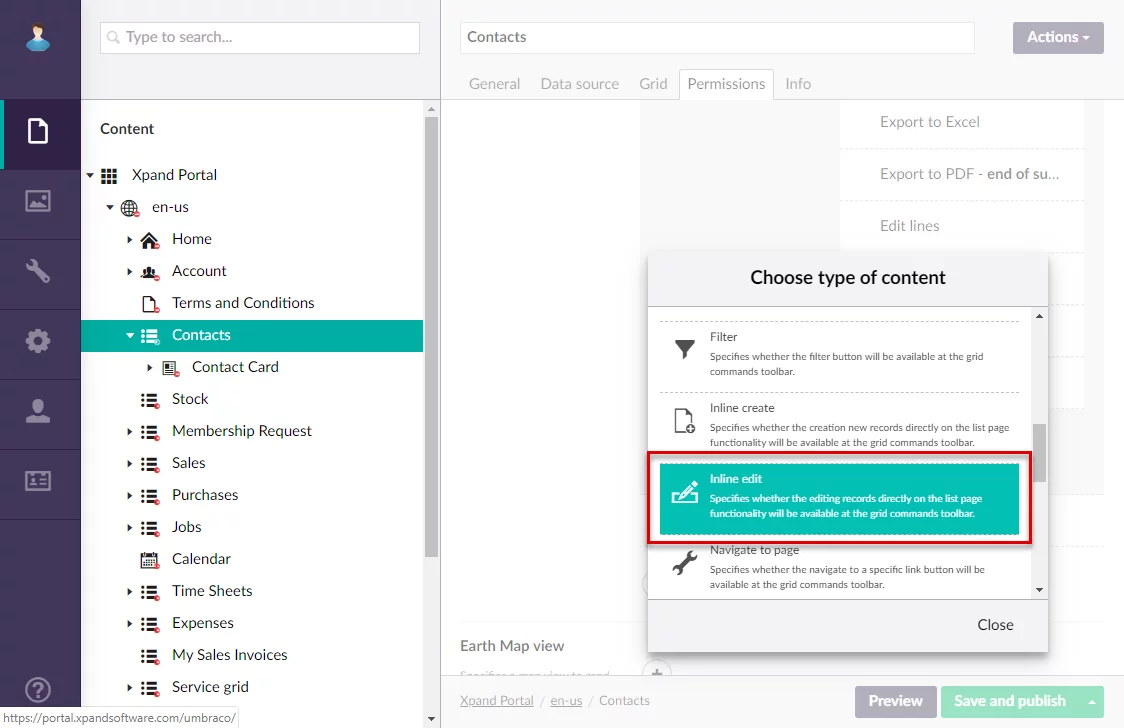
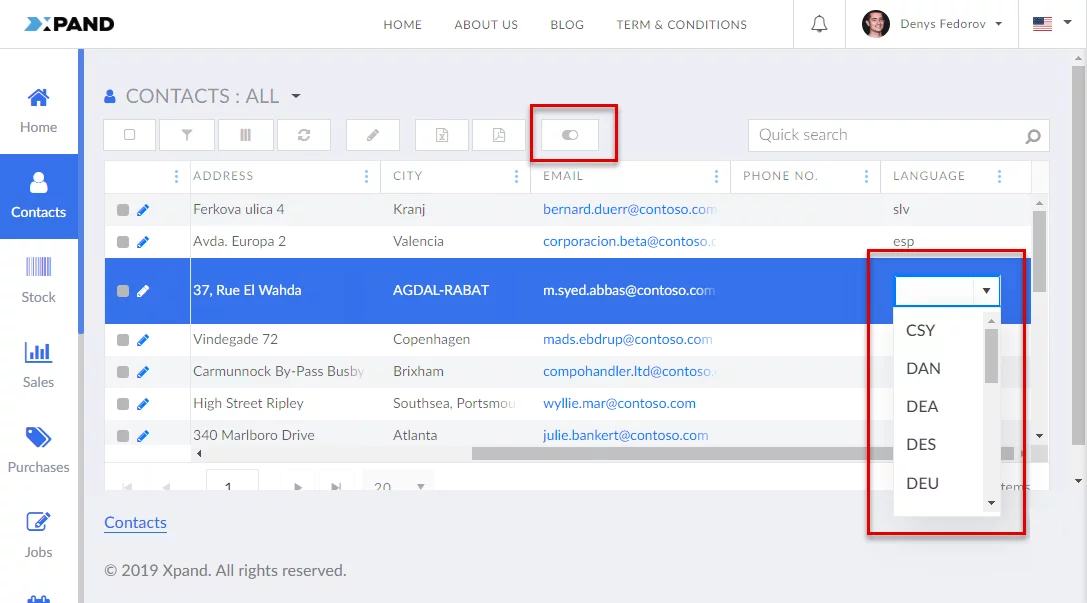
Additionally, this action must be enabled if you want to use
the Inline create action that allows
you to create a new record directly on the grid page.
Enhanced Calendar
The Calendar functionality has been expanded, introducing the following new features for this type of page:
- Now a Calendar page can be embedded into a grid page. This enables you to link the calendar with two different entities to show related data. For example, you can link the calendar to the Contacts entity and to the Meetings entity, set up relation between them, and then have the calendar display scheduled meeting for contacts.

- The Calendar page has a new view: Month Column. This view has days organized into column with column per day. This view can be used both when a calendar is embedded into a grid and in a stand-alone calendar.
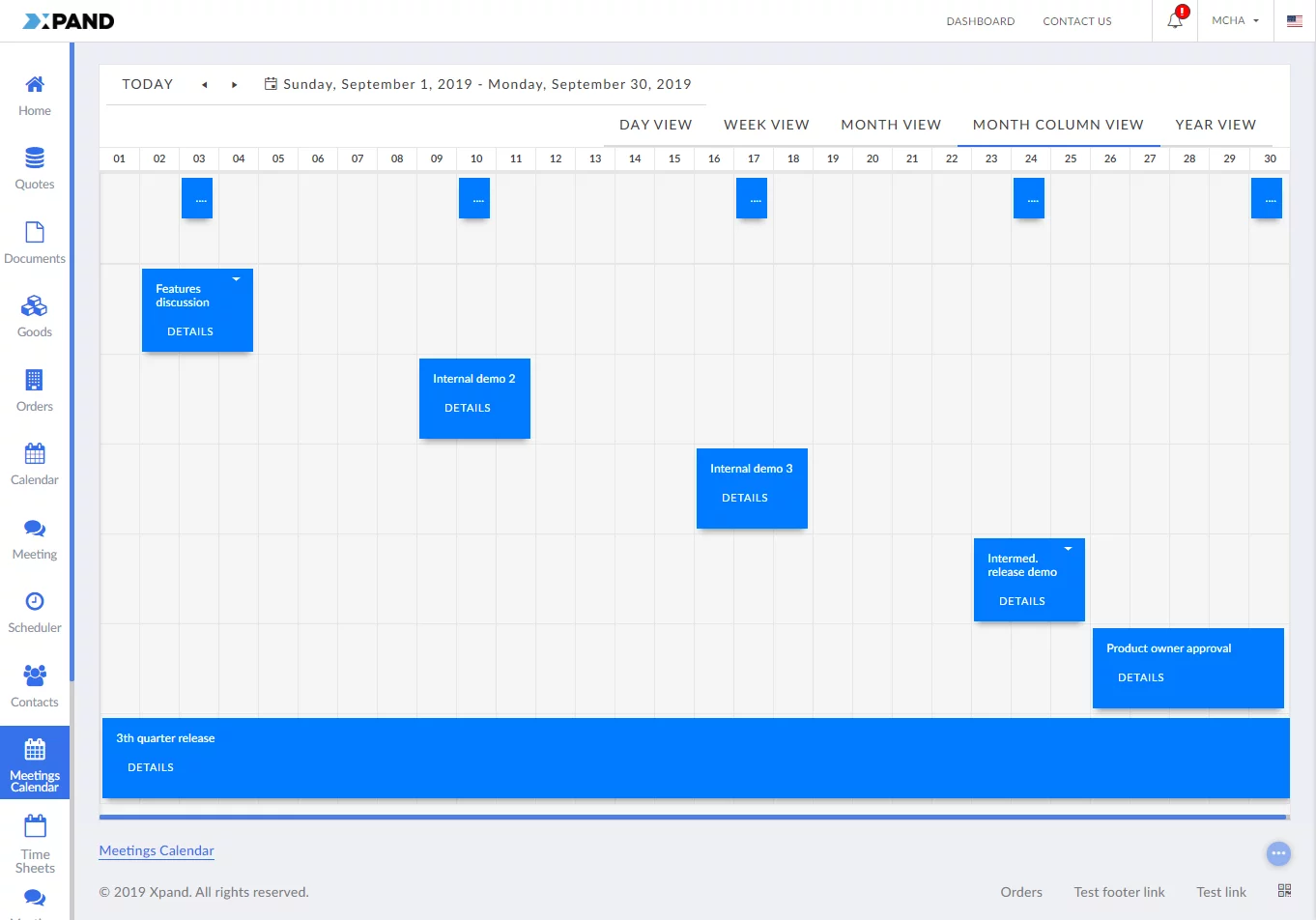
An embedded calendar is added to the
grid in the form of a new action, which allows you select the view type as well
as select whether you want to have the calendar display only records with
events.
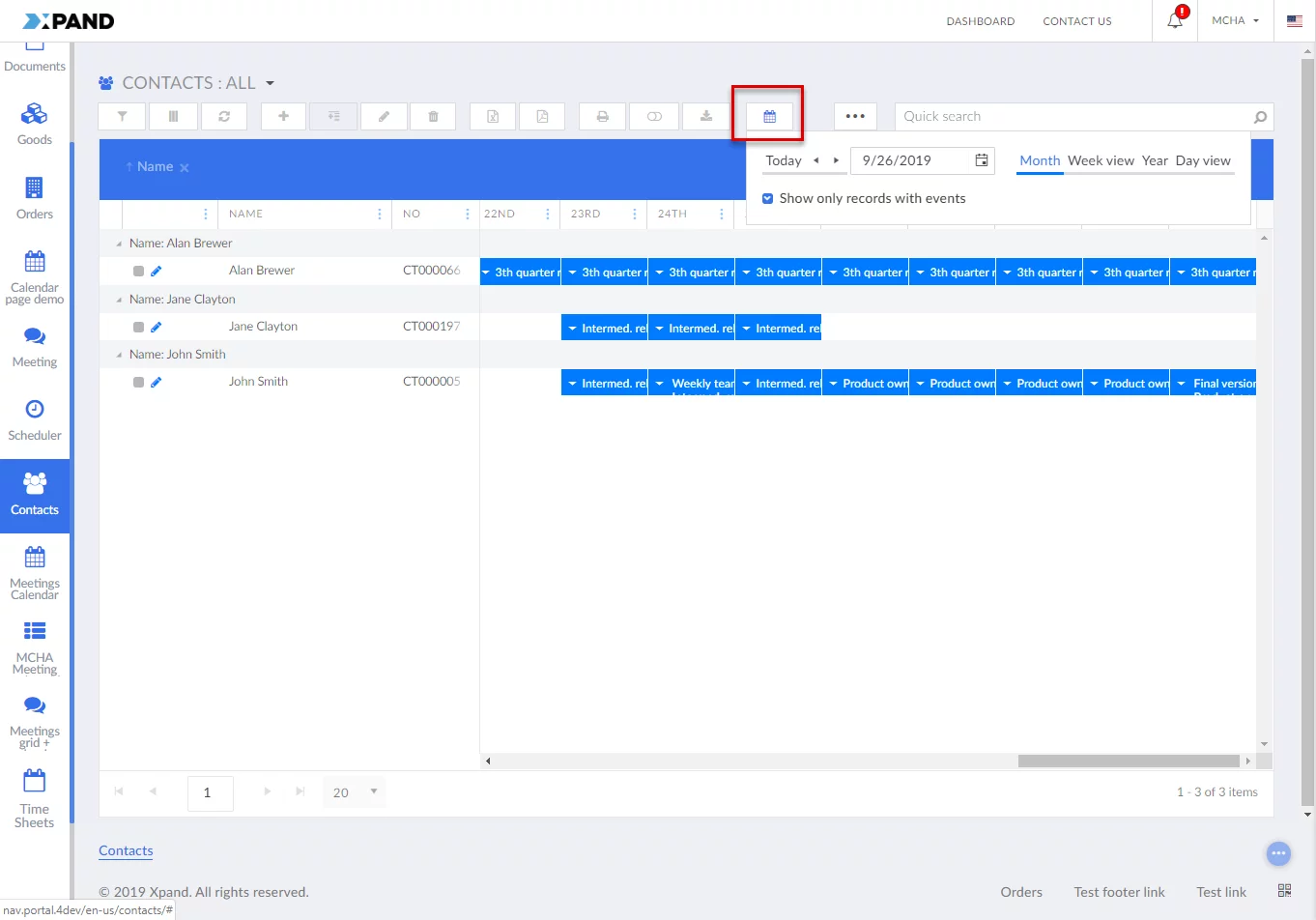

- Additional settings for the Calendar page allow you to configure:
- Which day of week will be the first one
- Working hours
- Colors for events
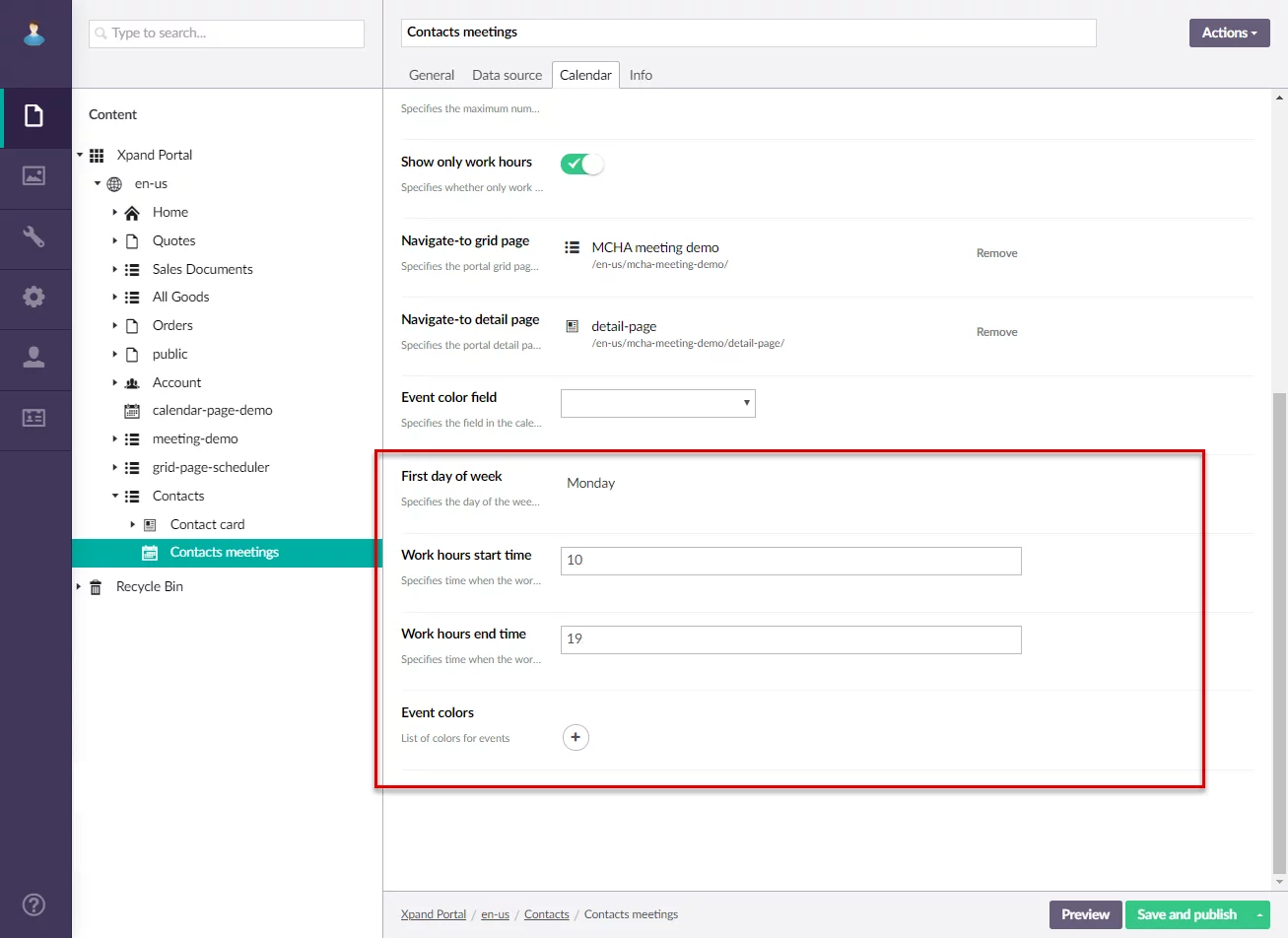
Portal Configuration Backup/Restore
This new feature allows you to export and import certain portal
configuration areas (back-end settings), which may be used to back up or
restore your portal back-end configuration.
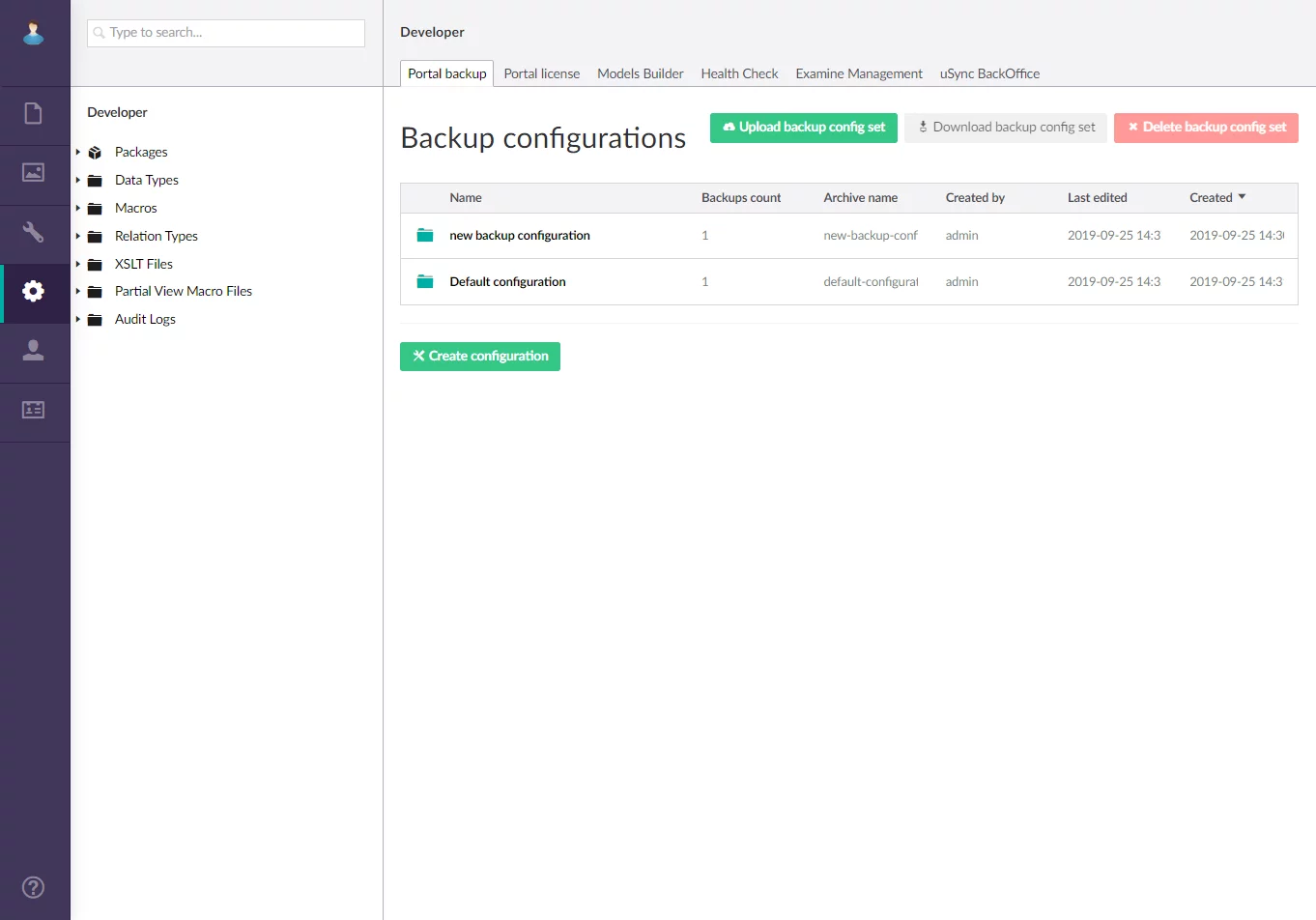
This functionality allows the portal admin to back up or restore the following back-end settings:
- Configuration from the Members area (portal members and member groups)
- Configuration from the Content area (back-end pages and setting values)
- Configuration from the Media area
Additionally, Xpand Portal allows merging and expanding configuration when you are restoring configuration from a backup file. Therefore, you can choose how to merge imported data when restoring configuration, in case the configuration structure does not fully coincide: you can choose to overwrite an existing back-end page with a page from the backup file only in case its ID is the same, or its node name is the same, or both its ID and node name are the same as in the backup file.
Note: If you want to restore your configuration without merging it with the existing configuration, you need to ensure that CMS areas where configuration can be restored are empty before trying to import configuration from a backup file.
Prior to making a configuration backup or restoring a configuration backup, you set up import or export settings where you choose which configuration areas should be exported or imported, and how configuration will be merged during import.

The default configuration file is always available to restore
the default portal configuration. Then, you can create a custom backup with
your custom portal configuration.

After you specify which configuration areas will be exported, you start the backup process. Configuration is exported into a ZIP archive that contains configuration backup files and a JSON file with export/import settings.
The created configuration backup file can be downloaded so that you could upload it on to a different portal environment if necessary.

When you need to restore configuration, you upload a previously
exported configuration file, or select an existing backup file after having
selected which import settings will be used during restoration.
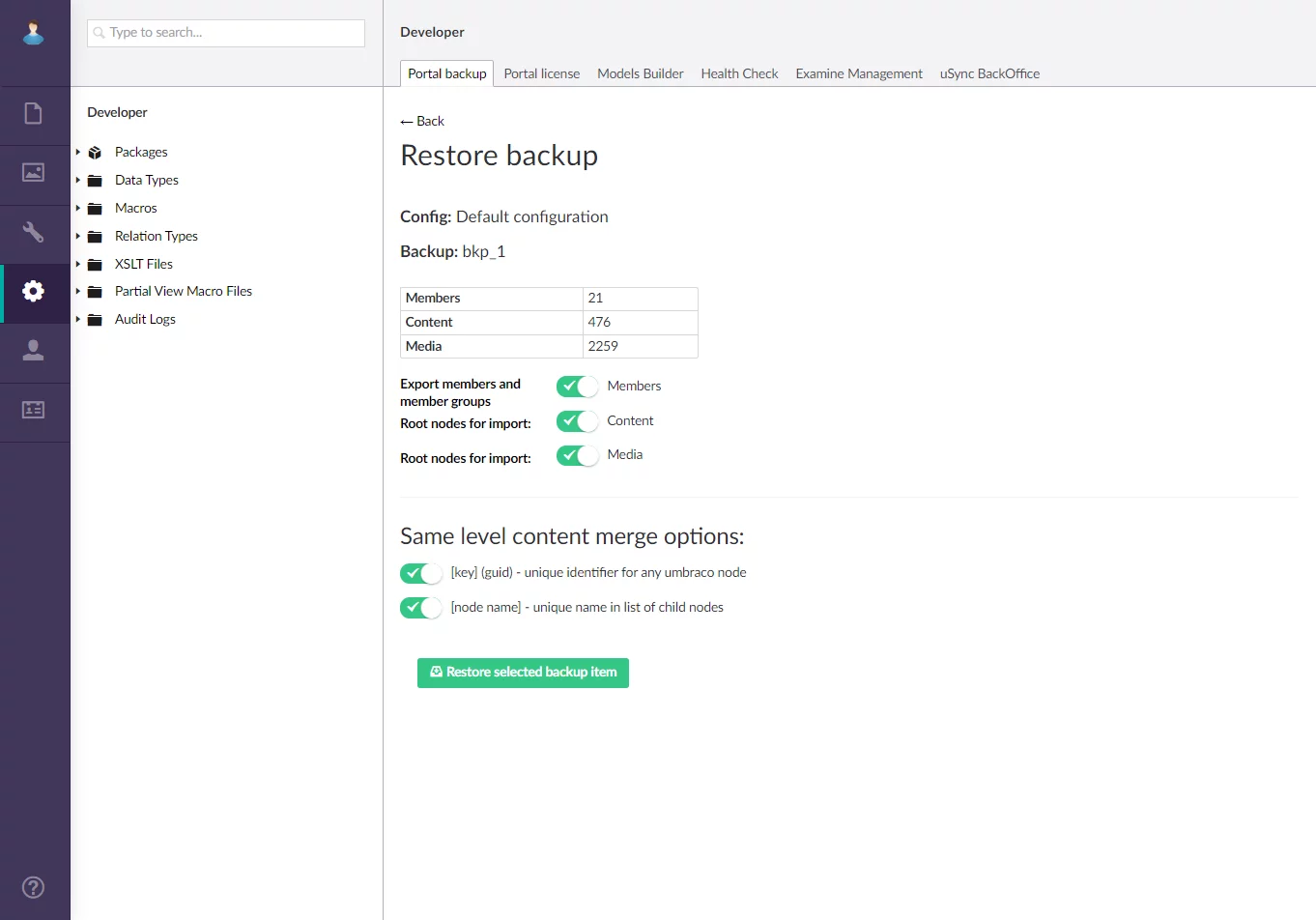
You can also view history for a backup file, where the export/import log is displayed.
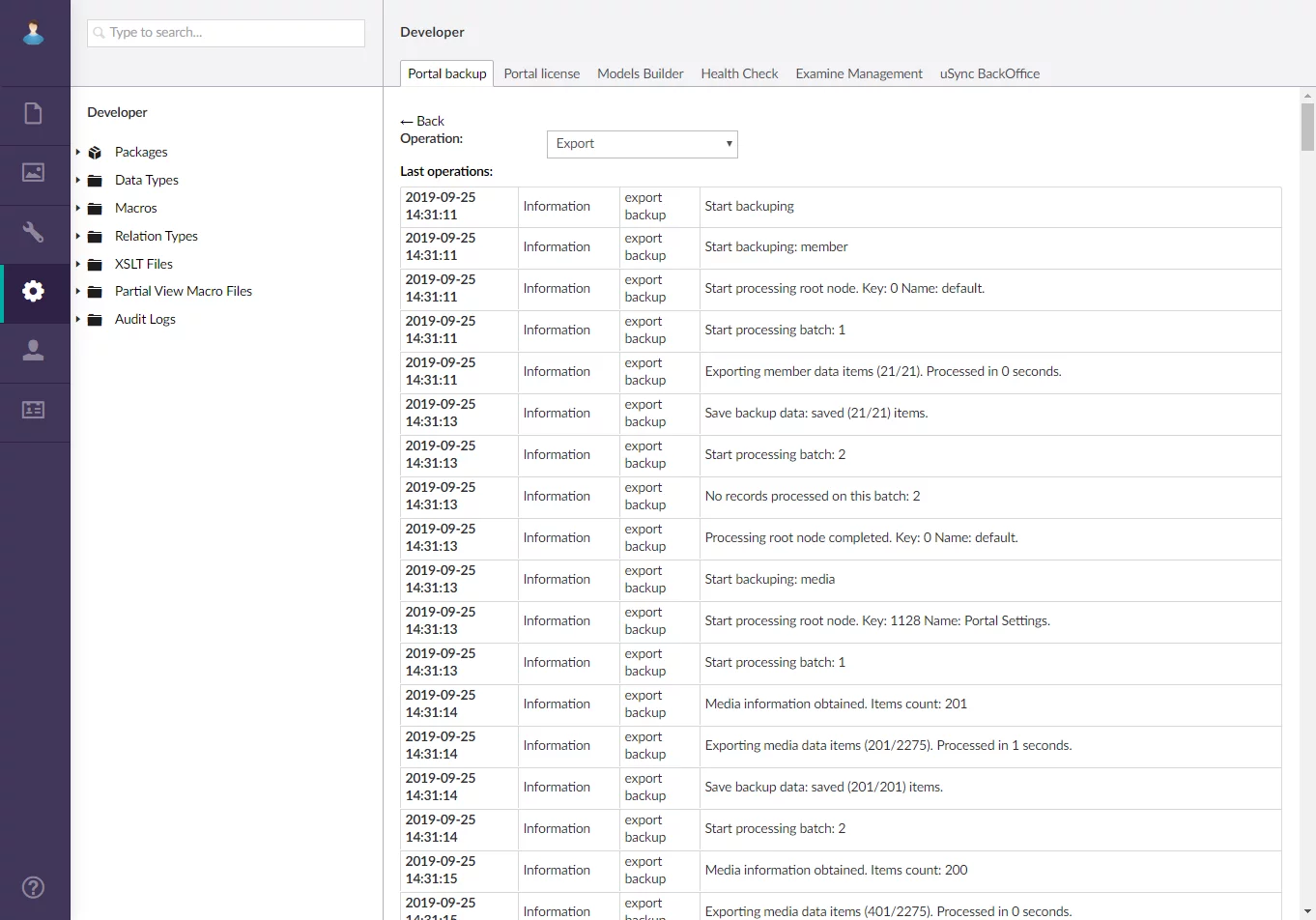
Xpand Portal API
Xpand Portal now features its own API that can be utilized by external applications, such as PowerBI, to send queries and retrieve data from the portal.
A SWAGGER client is used as an example to visualize interaction with the Xpand Portal API’s resources to retrieve information and data from Xpand Portal.

For example, in this client, the following methods can be used to send queries to Xpand Portal API:
- HEAD: …Entities – Can be used to test connection with Xpand Portal and ensure that it’s up and running and configured properly
- GET: …Entities/Info –Returns information about portal entities. You can set filters by entity to retrieve information about specific portal entities. Optionally, you can choose to also retrieve information about the entity’s fields.
- GET: …Entities/Setup – Returns information about back-end configuration, including setting values.
- POST: …Entities/Data –Returns data from a grid page. In the query you must specify the path to a grid page on the front-end. Optionally, you can specify additional parameters of the page from which data is to be retrieved.
An example of a query to retrieve data:
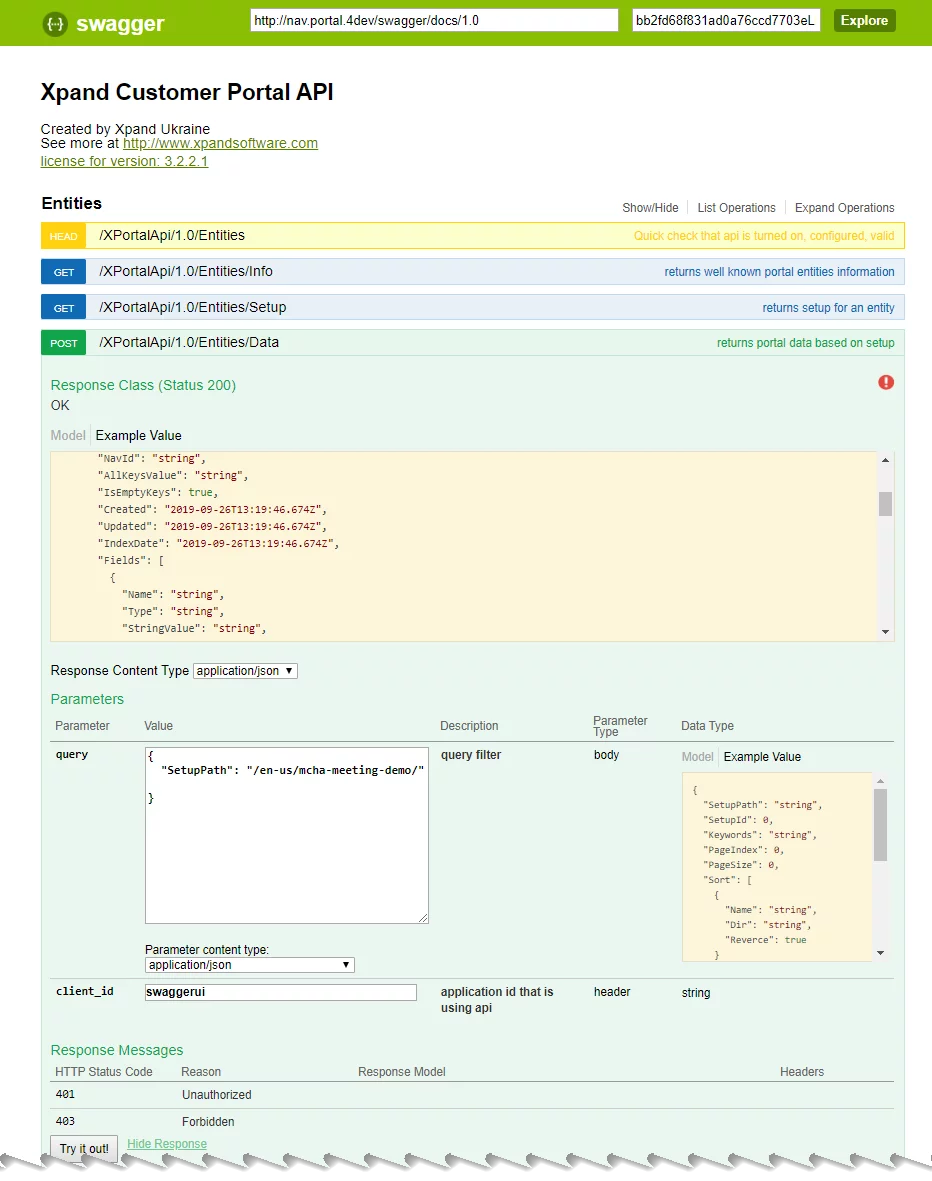
An example of returned data:
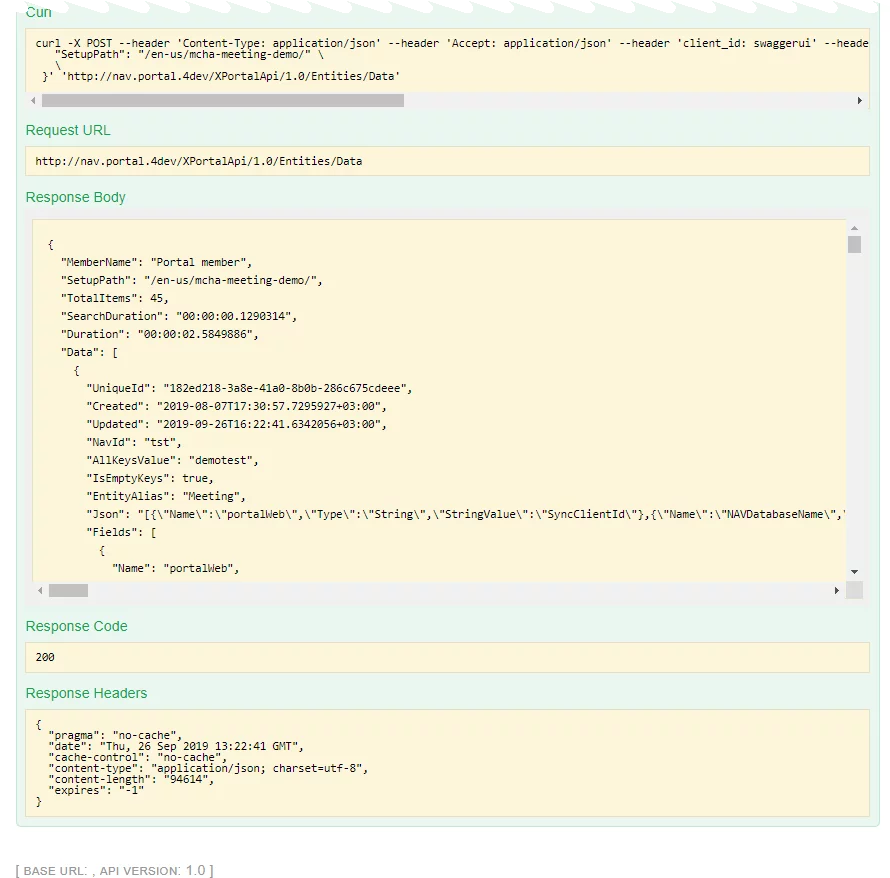
User-friendly SSO Settings
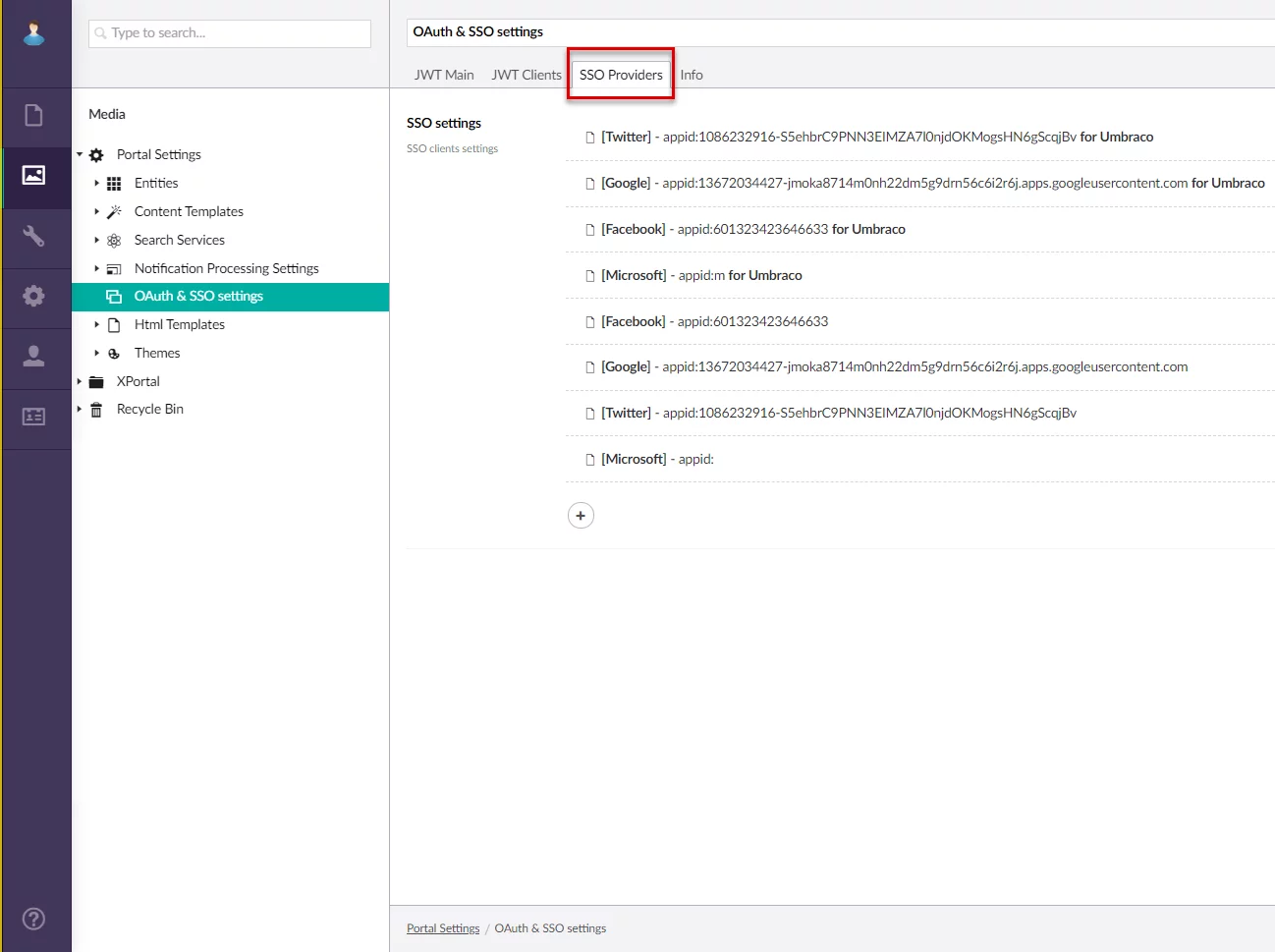
Other minor improvements
This release also features other minor tweaks and improvements throughout Xpand Portal, including:
- fixed bugs
- revised captions and tooltips, especially in the back-end
For more information about these and other features of Xpand Portal, visit our help center or contact us to request a demo:
Phone: +380 44 251 36 36
Email: info@xpandsoftware.com

